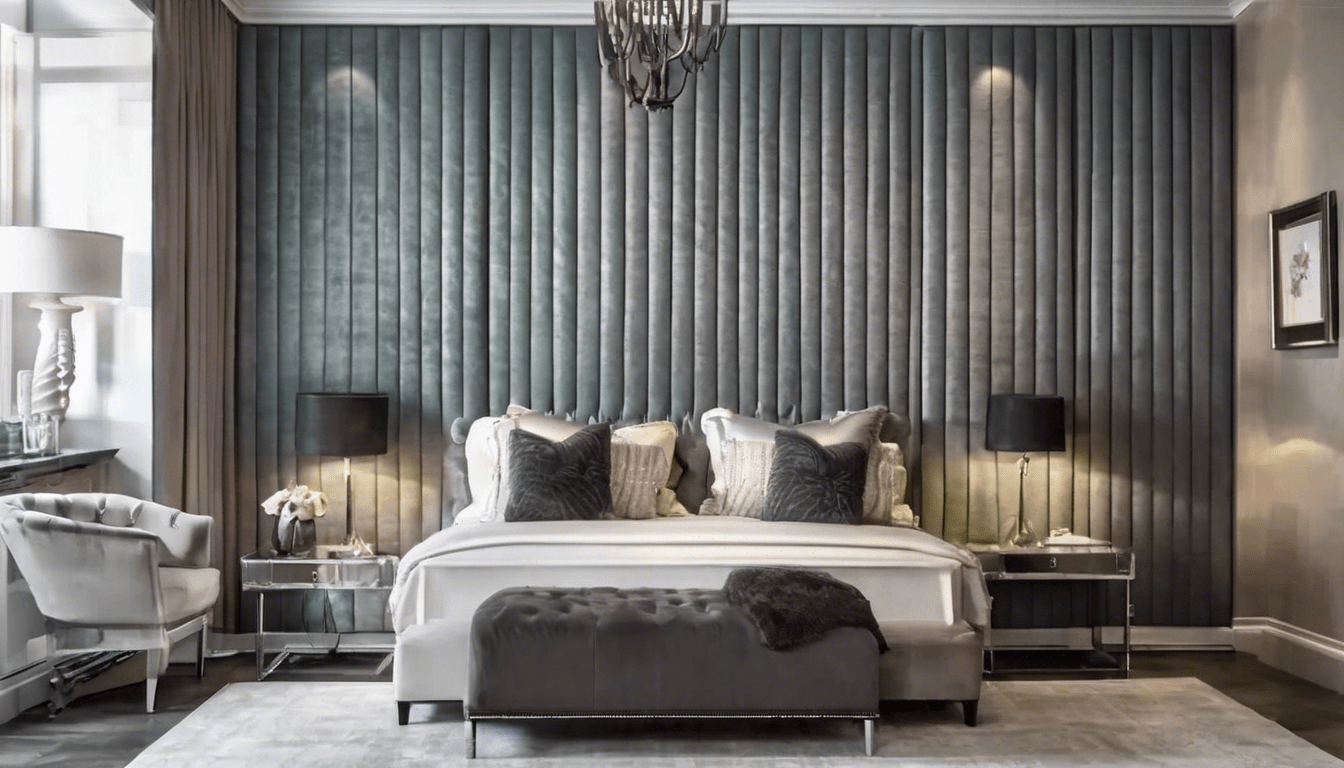Top trends in chic upholstered wall panels for your home

Upholstered wall panels combine style with function, transforming home interiors into sophisticated sanctuaries. Recent trends emphasize eco-friendly materials, innovative technology, and bold designs that reflect personal style. By exploring contemporary aesthetics, sustainable options, and customization possibilities, this guide offers a fresh perspective to elevate your decor—making your space not just beautiful but also aligned with future-forward design principles.
Overview of Latest Trends in Chic Upholstered Wall Panels
Upholstered wall panels have evolved significantly, reflecting broader trends in interior decor and sustainable design. Today, a clear shift toward eco-friendly materials defines the market, with many opting for natural fibers and recycled fabrics to enhance both aesthetics and environmental responsibility. These choices not only promote sustainability but also improve indoor air quality, making upholstered wall panels a healthier choice for living and working spaces.
Also to discover : What Are the Pros and Cons of Using Electric Scooters in UK Cities?
Technological integration is another transformative trend. Modern upholstered wall panels now often feature smart elements such as built-in lighting or soundproofing capabilities that adapt to user needs. This fusion of style and function elevates the panels beyond decoration into practical, interactive design features.
In terms of aesthetics, the contemporary style embraces minimalist and modern monochrome looks to create sleek, sophisticated environments. At the same time, textured and patterned upholstery adds depth and visual interest, while bold colors and luxurious fabrics serve as striking focal points in any room. These design choices demonstrate how upholstered wall panels can balance serenity with expression, catering to diverse tastes and spaces. For more ideas on enhancing interiors, consider exploring upholstered wall panels that combine these latest trends effectively.
Also to see : Durable polycarbonate rooflights: enhance lighting and security
Style Ideas and Applications for Home Interiors
Upholstered wall panels offer remarkable versatility in home decor, elevating various spaces with both function and style. In living rooms, these panels can transform a plain wall into a striking feature by introducing texture and patterns. Combining upholstered wall panels with paint or wallpaper creates a layered effect that adds depth and interest. Additionally, panels can highlight architectural features such as alcoves or fireplace surrounds, making them stand out elegantly.
In bedrooms, upholstered wall panels serve as more than decoration; they contribute to soundproofing, enhancing privacy and comfort. Selecting soft fabrics and neutral or calming colors helps foster a restful atmosphere essential for relaxation. Custom headboard designs can seamlessly integrate with wall panels, offering a cohesive and luxurious look that personalizes the private space.
Entryways and hallways benefit from panels that are both stylish and practical. Choosing durable, easy-to-clean upholstered panels ensures they withstand heavy foot traffic while maintaining their appearance over time. Incorporating lighting, such as LED strips or sconces alongside the panels, creates a warm and welcoming ambiance. To inject personality, these areas can feature artwork or decorative trims applied to the panels, linking functionality with sophisticated design.
For those seeking to explore more creative wall solutions, consider the impact that upholstered wall panels can have in redefining home interiors with both aesthetic appeal and practical advantages.
Material Options and Installation Tips
Choosing the right material for your upholstered wall panels is crucial to balancing style, durability, and maintenance. Popular fabrics include velvet, prized for its luxurious texture and depth of color, linen, appreciated for its natural breathability and subtle texture, and performance fabrics, engineered to resist stains and fading, making them ideal for high-traffic areas. For those seeking budget-friendly alternatives, faux leather and synthetic textiles offer resilience and ease of cleaning without sacrificing style. Combining various textures, such as pairing smooth faux leather with tactile linen, can enrich the visual appeal and complement diverse interior themes effectively.
Accurate wall preparation and precise measurement are non-negotiable steps before installation. Walls should be clean, smooth, and dry to ensure adhesive systems work optimally. When selecting between adhesive and mounting hardware, consider the wall material and whether you might want to remove or reposition panels in the future. Adhesives provide a sleek, nail-free look but may pose challenges if panels need to be taken down. Mounting systems, like furring strips or clips, facilitate removal and adjustment while maintaining strong stability. Professional installers recommend using a level, securing edges firmly, and spacing panels consistently for a seamless finish that elevates your space’s aesthetics.
Maintaining upholstered wall panels requires fabric-specific care strategies. Lightweight vacuums or soft brushes effectively remove dust from velvet or linen without damaging fibers. For performance fabrics and faux leather, gentle spot cleaning with mild detergents usually suffices. Preventative measures such as avoiding prolonged exposure to direct sunlight and using protective sprays can extend the fabric’s life and prevent stains or fading. Over time, panels can be refreshed by reapplying upholstery or using fabric-safe cleaning products, preserving their fresh, vibrant appearance for years. For more information on stylish and durable options, explore upholstered wall panels.
Benefits and Aesthetic Impact of Upholstered Wall Panels
Upholstered wall panels offer more than just visual appeal; they provide significant functional benefits that enhance home comfort. One of the most notable advantages is their ability to improve acoustics by absorbing sound, which reduces echo and noise pollution in residential spaces. This feature is especially valuable in urban homes or rooms with hard surfaces where sound tends to bounce. Alongside sound absorption, these panels contribute to improved insulation. By adding an extra layer to the walls, they help maintain consistent indoor temperatures, boosting energy efficiency and potentially lowering heating and cooling costs.
The tactile nature of upholstered wall panels evolves the interior ambiance by introducing soft textures and warm tones. This creates inviting and cozy environments that transform stark walls into comfortable, lived-in spaces. The versatile designs of these panels allow them to complement various decor styles, from modern minimalism to classic elegance. Their ability to add architectural depth and dimension makes them a compelling alternative to flat painted surfaces, turning plain walls into feature focal points rich in texture and color variation.
Exploring the eco-friendly facet, many upholstered wall panels now utilize non-toxic, sustainable materials that support healthier indoor air quality. This approach aligns with growing consumer demand for environmentally responsible choices in interior design. Using such panels can reduce exposure to harmful chemicals commonly found in paints or synthetic wall coverings, enhancing overall wellbeing. Moreover, opting for upholstered wall panels made from renewable or recycled resources underscores a commitment to sustainable design, making them a responsible choice for health-conscious homeowners.
For those seeking to blend durability, style, and environmental care, these panels offer practical benefits that extend beyond aesthetics. To explore stylish options and further elevate your space, consider checking out examples of upholstered wall panels designed for both elegance and function.
